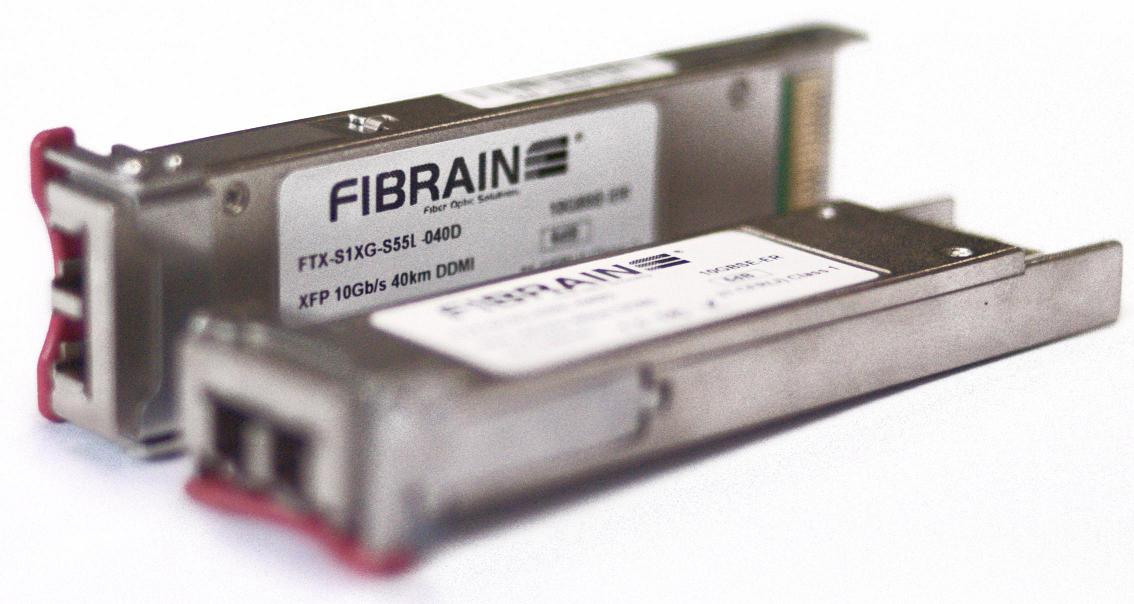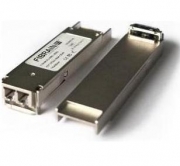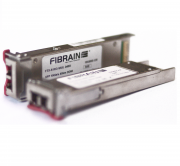
The XFP specification was developed by the XFP Multi Source Agreement Group. It is an informal agreement of an industry group, not officially endorsed by any standards body. The first preliminary specification was published on March 27, 2002. The first public release was on July 19, 2002. It was adopted on March 3, 2003, and updated with minor updates through August 31, 2005. XFP modules are hot-swappable and protocol-independent. They use an LC fiber connector type to achieve higher density. XFP modules typically operate at near-infrared wavelengths (colors) of 850 nm, 1310 nm or 1550 nm. Maximum throughput of XFP transceivers reaches 11.3Gbps, principal applications include 10 Gigabit Ethernet, 10Gb/s Fibre Channel, SONET at OC-192 rates, SDH @ STM-64, 10 Gb/s Optical Transport Network (OTN) OTU-2, and parallel optics links. They can operate over a single wavelength or use coarse/dense wavelength-division multiplexing techniques. They include digital diagnostics that provide management that were added to the SFF-8472 standard.
| Transmission speed | Connector | Transmission medium | Transmission distance | Technology |
| 9.93~11.3Gbps |
LC Simplex |
Multi-mode fiber Single-mode fiber |
Up to 80km/120km |
Dual fiber |
| Actual parameters may vary depending on transceiver model, please check datasheet for details | ||||
XFP transceivers can be considered as the successor of XENPAK an X2 optical modules. Compact sizes and lower power consumption made XFP optical modules well suited for high port density applications like high capacity switches and routers. Depending on type of transmitter and receiver used in particular model these transceivers can reach up to 80km transmission distance (without external optical aplifiers). Some modules are available with built in electronic chromatic dispersion compensation - in that case maximum transmission distance can reach up to 120km. Transceiver can be prepared as compatible with: Cisco, HP, Netgear, Avaya, D-Link, Brocade, Extreme Networks, Huawei, Enterasys, 3Com, Alcatel-Lucent and other. To confirm compatibility please contact technical support before ordering.
For more information please check categories of XFP optical transceivers listed below.



